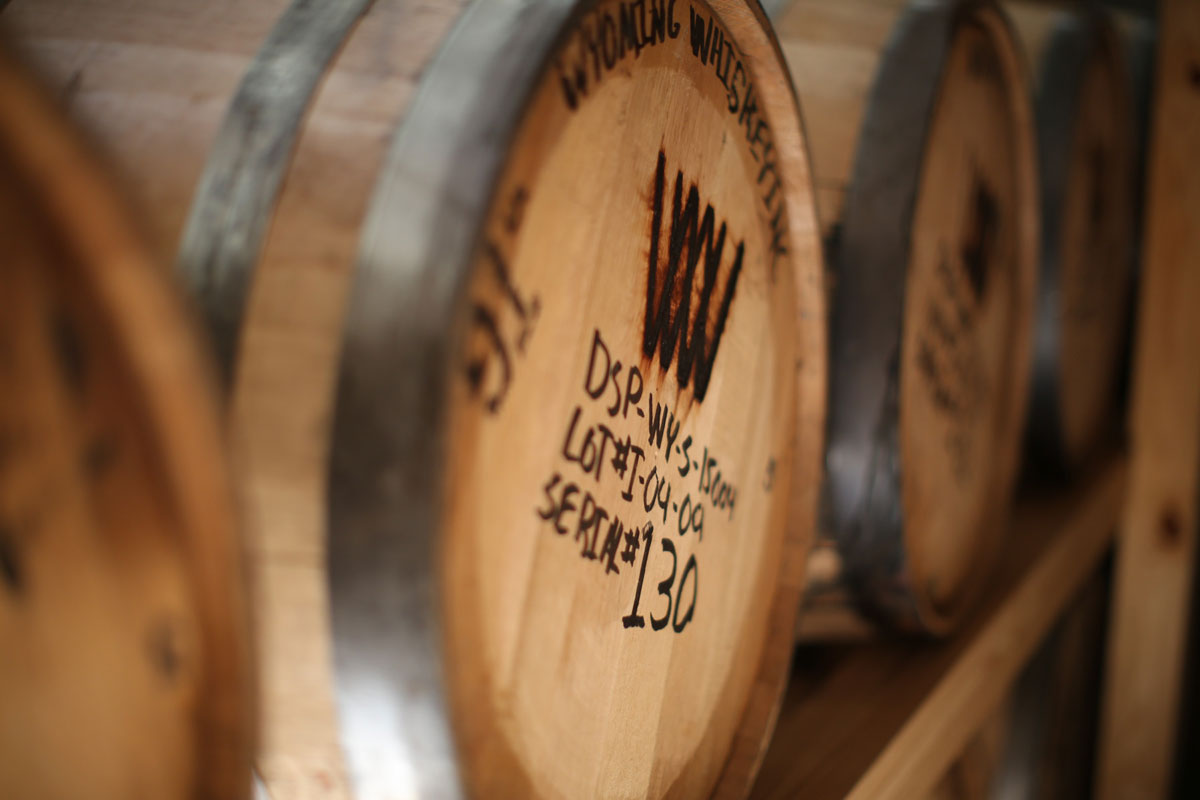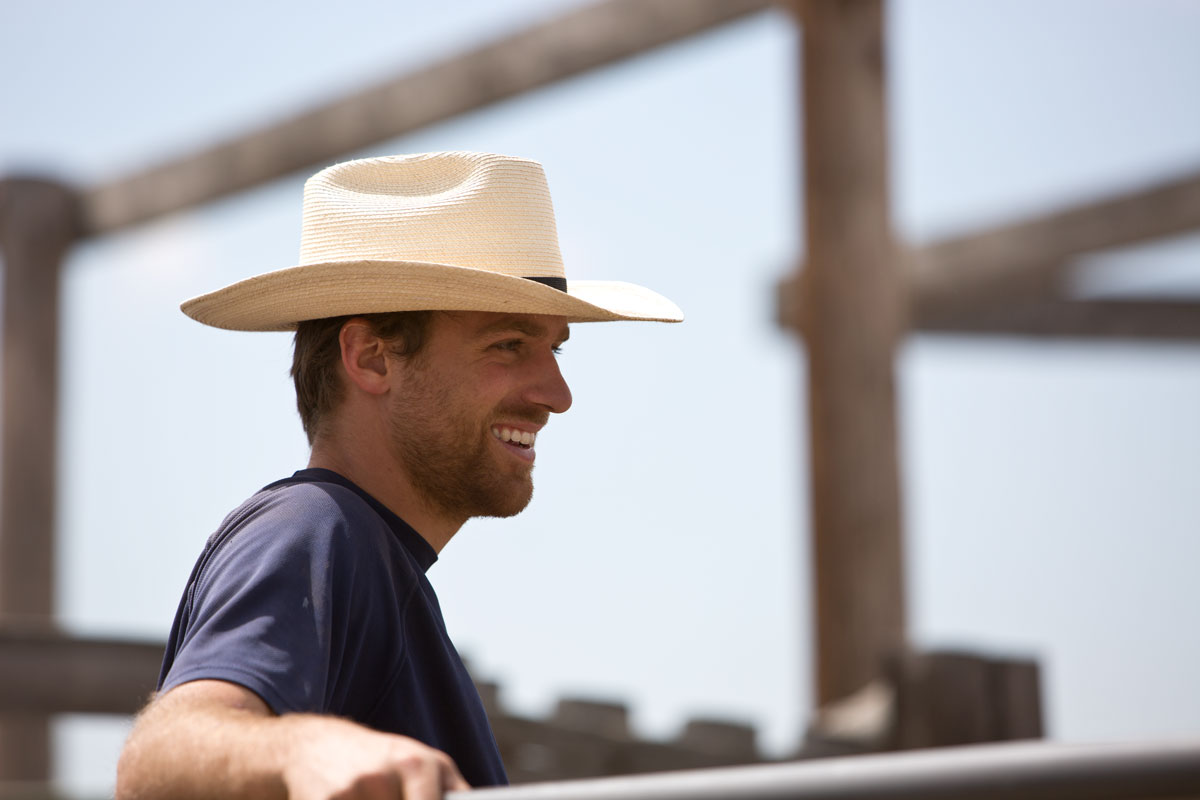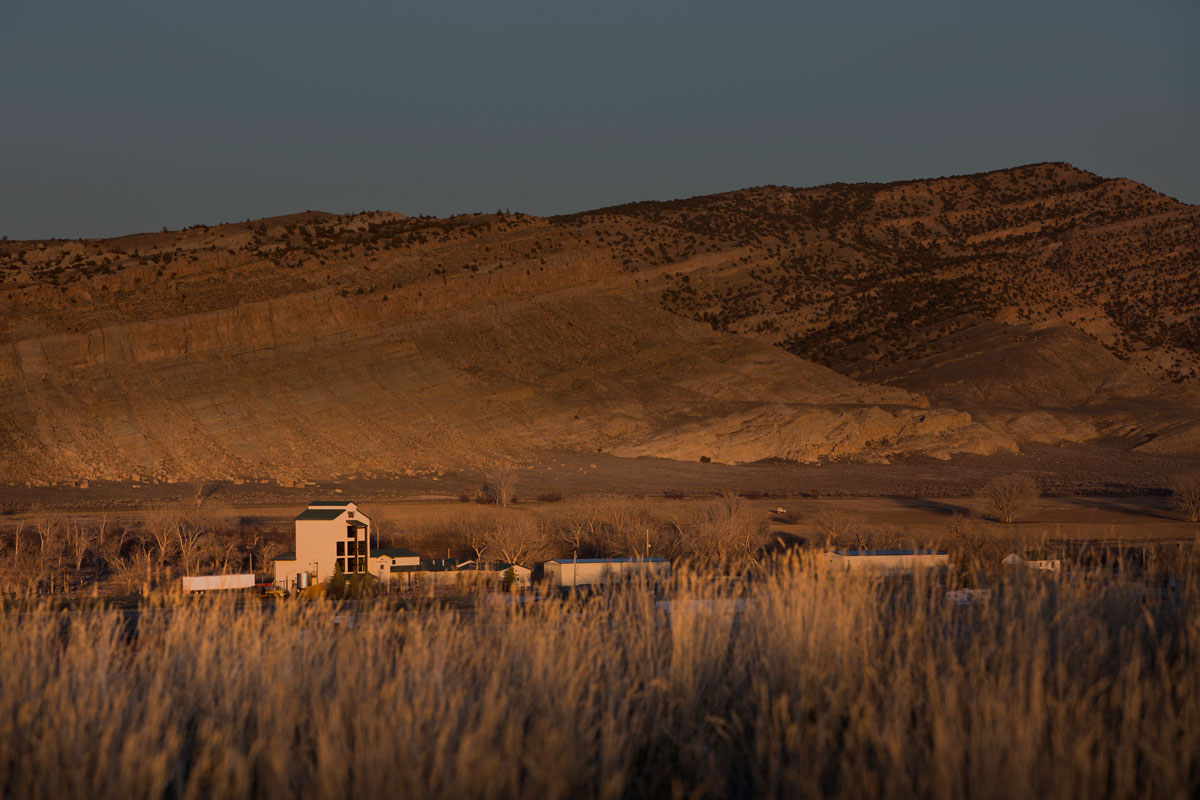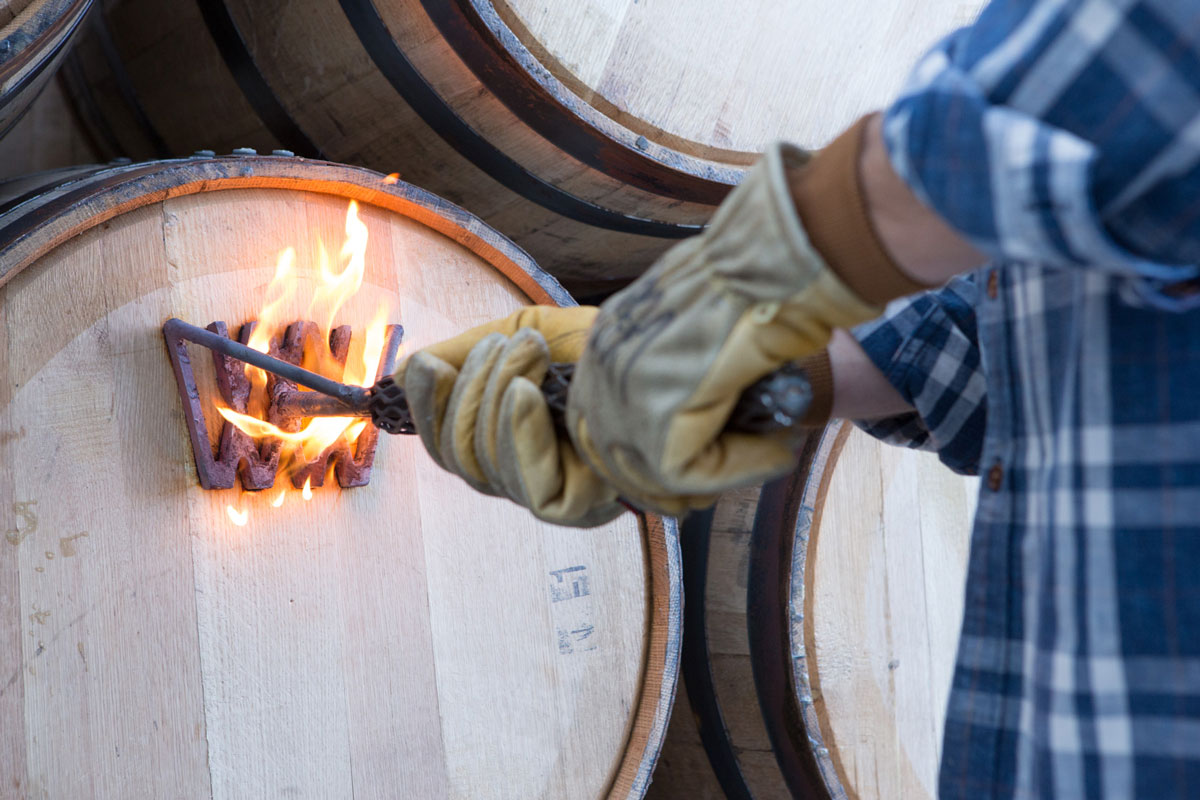There are just some drinks that go down smoother in the great outdoors. Like a craft beer after a long mountain bike ride. When it comes to the quintessential spirit for a camping or backpacking trip, the one that comes to mind most for me is good-old, slow-sipping whiskey.
Interestingly, craft distilleries have exploded in the last few years, and getting to know the history of whiskey has been a fun armchair endeavor this winter, especially since it’s so suited to outdoor life.

Wyoming Whiskey’s flagship small-batch bourbon is medium amber in color with a nose of sweet corn, molasses and clove.
To learn about the rise of this adventurous spirit, I caught up with Sam Mead, the son of a fourth-generation ranch family that’s now making a premium bourbon brand called Wyoming Whiskey.
Wyoming is a rather unconventional place to brew whiskey’s sister, bourbon, but the small-batch distillery is committed to community, using all regionally sourced ingredients that reflect the real feel and taste of place.
Wyoming’s Big Horn Basin serves up all the stuff of great bourbon: Water is sourced from a mile-deep limestone aquifer that hasn’t seen the light of day in over 6,000 years, and the non-GMO corn, wheat and barley used in the process are all grown locally in Kirby, Byron and Riverton.
Sam answered more of my pressing questions about whiskey and its connection to an outdoor life.

Sam Mead on his family’s Wyoming ranch and whiskey distillery.
JK: Why do you think people of all ages are becoming so interested in whiskey distilling?
SM: I think whiskey for a time was pigeonholed into a category that was exclusive to older white males, and it’s a shame to see that happen to such a great spirit. There are so many expressions of whiskey, from scotch to bourbon to white whiskey, that there really is something for everyone to appreciate. It’s exciting to watch a broader audience form opinions and find nuances about spirits that (some) people previously thought were one-dimensional.
JK: Why is whiskey’s history so tied to the outdoor life, whether in Appalachia or the American West?
SM: Although whiskey wasn’t born in America, we have thoroughly adopted it into the history of the country. It is part of our identity. There is something about the rough, outlaw visage, yet polished and refined interior, that resonates deeply within Americans. Americans are frontiersmen (and women!), and although less so now, that meant outdoor life for a significant part of our history. I’m going to go deep here, but I think that the images of the Whiskey Rebellion, the cowboy at the saloon having a shot of whiskey, those images bring out the explorer and outdoorsman in all of us.
JK: Whiskey is such a packable drink, especially for outdoor adventures or around a campfire. What are some of your favorite ways to drink it in the outdoors?
SM: Neat, like nature intended. I’m afraid I won’t be bringing cocktail ingredients into the woods anytime soon.

Kirby is a cowboy town. The challenge for Wyoming Whiskey is making a traditional spirit with a nod to what’s next in craft distilling.
JK: What does “Wyoming” whiskey really mean to you?
SM: Wyoming Whiskey to me is a fusion of tradition and “craft” mindset. We make bourbon much like they would have in Kentucky years ago, but we also have some product lines that probably would have looked unusual decades ago, and our climate has some fairly extreme temperatures compared to Kentucky. At the end of the day the most important thing is the pride and care we take to bring Wyoming Whiskey to people’s lips.
JK: What are some of your favorite outdoor places where Wyoming Whiskey would be the perfect companion?
SM: Obviously, I have a soft spot for Wyoming, but it is one of my favorite regions of the U.S. America has so many incredible outdoor places that it’s hard to make a list. I try to get out and explore as much as I’m able, and maybe the most appropriate answer is … wherever I’m currently enjoying myself.

